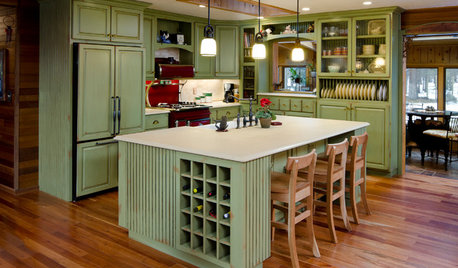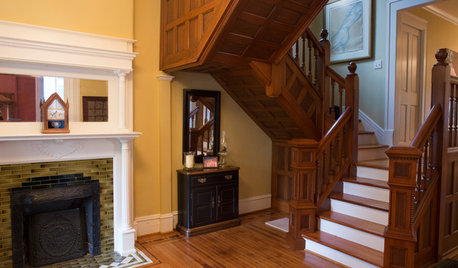Replacing Receptacle on old electric cooktop
cebury
12 years ago
Related Stories

KITCHEN APPLIANCESFind the Right Cooktop for Your Kitchen
For a kitchen setup with sizzle, deciding between gas and electric is only the first hurdle. This guide can help
Full Story
MOST POPULARKitchen Evolution: Work Zones Replace the Triangle
Want maximum efficiency in your kitchen? Consider forgoing the old-fashioned triangle in favor of task-specific zones
Full Story
MOST POPULARHow to Reface Your Old Kitchen Cabinets
Find out what’s involved in updating your cabinets by refinishing or replacing doors and drawers
Full Story
HOMES AROUND THE WORLDHouzz Tour: Easy Mix of Old and New Revives a Family Townhouse
Contemporary furniture and modern fixtures blend with period architecture in this large open-plan home in London
Full Story
KITCHEN DESIGNModernize Your Old Kitchen Without Remodeling
Keep the charm but lose the outdated feel, and gain functionality, with these tricks for helping your older kitchen fit modern times
Full Story
MY HOUZZMy Houzz: Attention to Detail Revives a Century-Old Louisville Home
After 13 years of wishful thinking, a couple complete a 5-year renovation in their historic Highlands neighborhood
Full Story
KITCHEN DESIGNKitchen of the Week: Grandma's Kitchen Gets a Modern Twist
Colorful, modern styling replaces old linoleum and an inefficient layout in this architect's inherited house in Washington, D.C.
Full Story
KITCHEN APPLIANCESFind the Right Oven Arrangement for Your Kitchen
Have all the options for ovens, with or without cooktops and drawers, left you steamed? This guide will help you simmer down
Full Story
BEFORE AND AFTERSReader Project: California Kitchen Joins the Dark Side
Dark cabinets and countertops replace peeling and cracking all-white versions in this sleek update
Full Story
VINTAGE STYLERevel in Retro With Vintage and New Kitchen Appliances
Give your kitchen old-fashioned charm with refrigerators and stoves that recall yesteryear — even if they were made just yesterday
Full Story







bus_driver
ceburyOriginal Author
Related Professionals
Clinton General Contractors · Conneaut General Contractors · Coshocton General Contractors · Leon Valley General Contractors · Redding General Contractors · Rotterdam General Contractors · Vincennes General Contractors · Bel Air Solar Energy Systems · Beverly Hills Solar Energy Systems · Chanhassen Solar Energy Systems · Garden Grove Home Automation & Home Media · Manhattan Beach Home Automation & Home Media · Minnetonka Home Automation & Home Media · Yeadon Home Automation & Home Media · South Euclid Home Automation & Home Mediabrickeyee
bus_driver
ionized_gw
ceburyOriginal Author
brickeyee
ionized_gw
weedmeister
ceburyOriginal Author
ionized_gw
bus_driver
ionized_gw
brickeyee